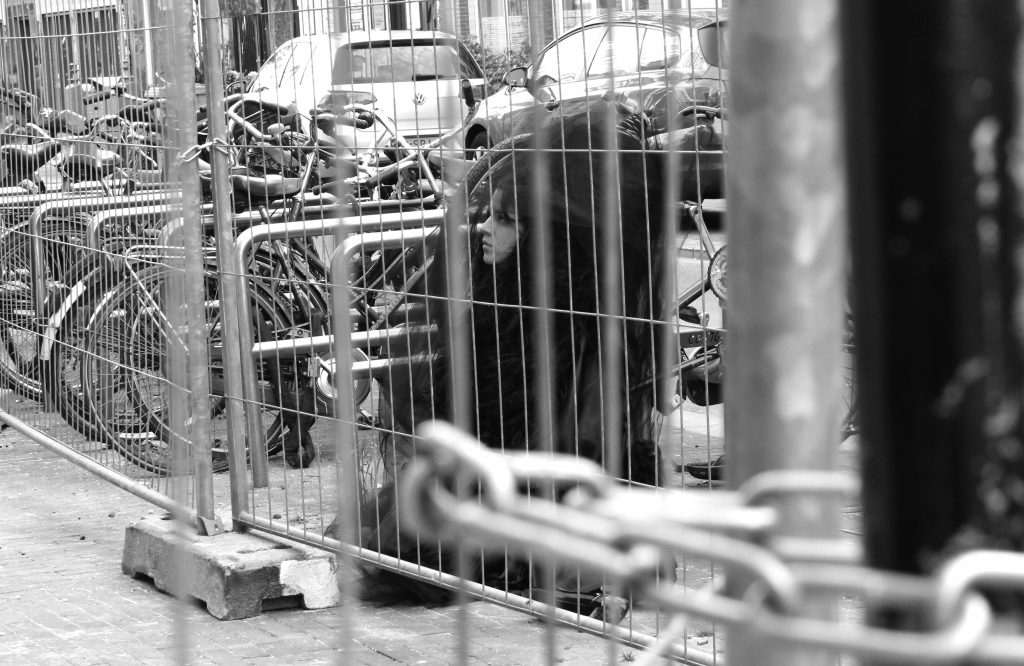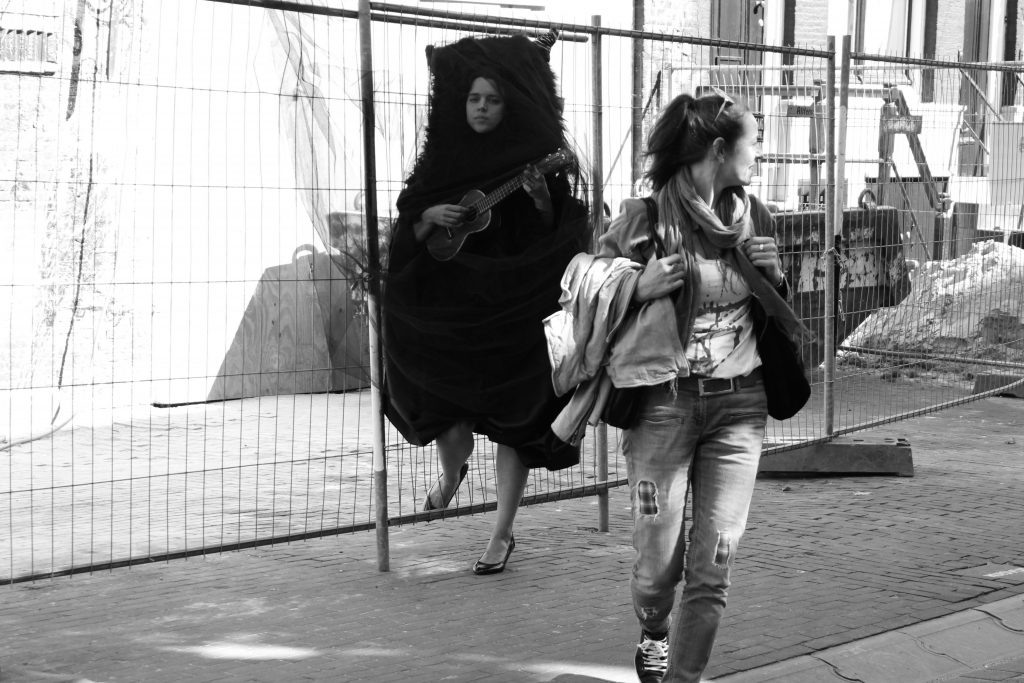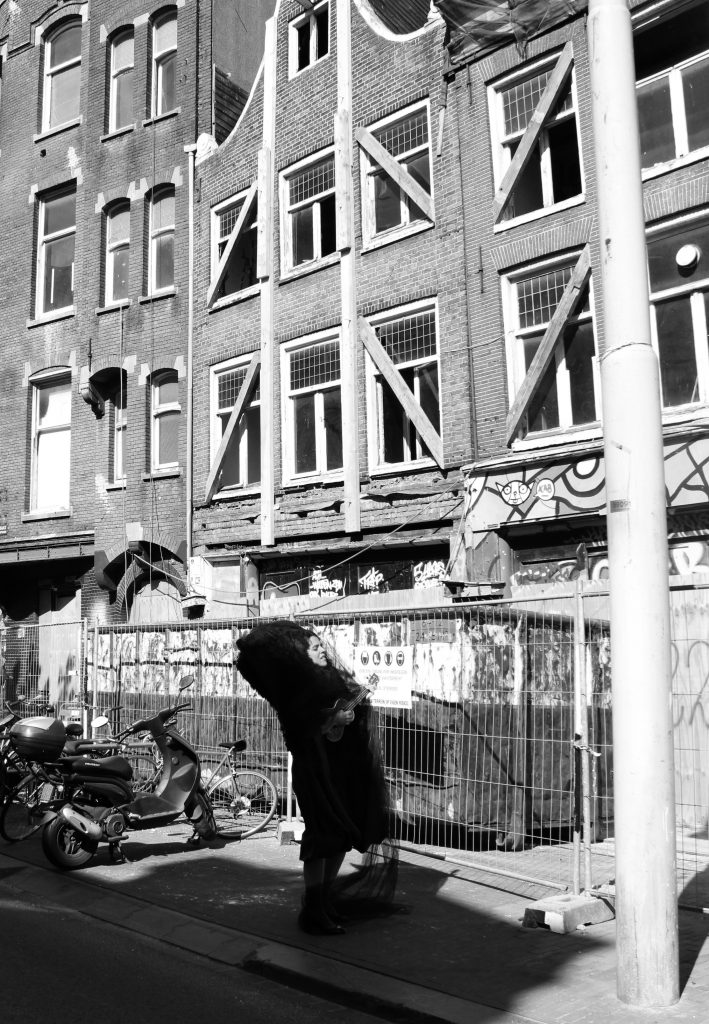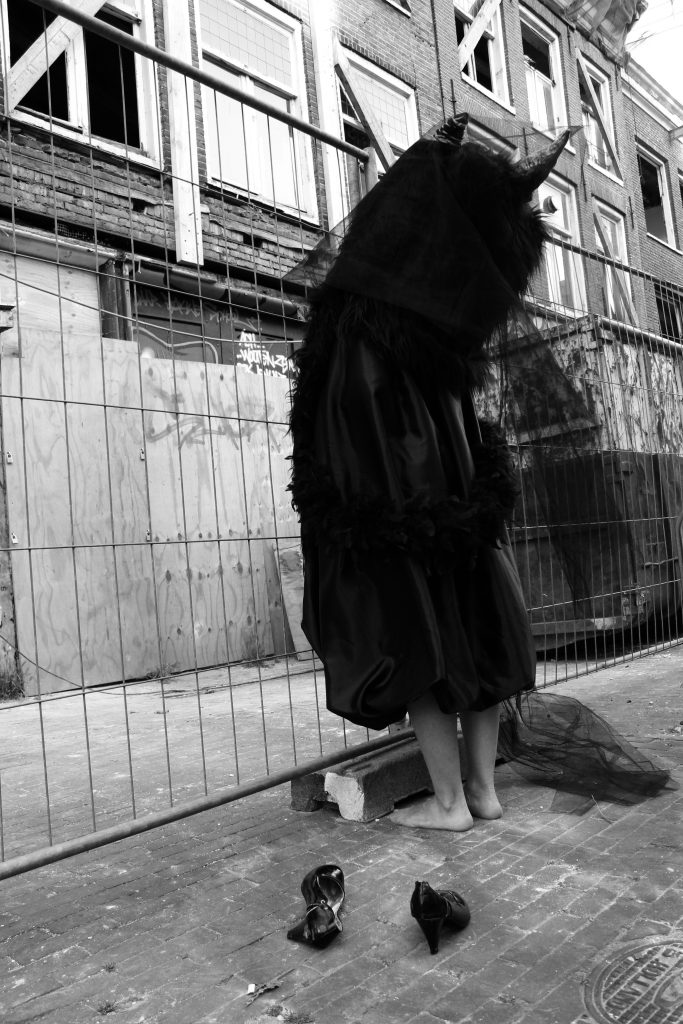Public intervention Amsterdam 2015
Collaboration with Catherine Elsen
Living and moving in between different cities, we see that everywhere old houses are disappearing and new houses are being built. Buildings that seem stable and unchangeable are in constant destruction and reconstruction. Even Amsterdam as a calm and stable capital in Northern Europe, with a fixed historical facade, is metamorphosing from the inside. Under the monumental skin of the city, lies the desire for renovation. Currently, in Spuistraat, located in the touristic centre of Amsterdam, the last remaining houses that belong to the Squat movement, are being evicted by the police. There is no possibility for the houses to stay in control of their recent owners. Power has shifted it into the hands of a more powerful one.
32 years of squatting these buildings in the centre of Amsterdam has an influence far greater than just its colourful facade and political slogans on the walls. The Spuistraat buildings were part of the left-over identity of the Amsterdam from the 70’s and 80’s. A liberal Amsterdam, open to new experiences of living. Eviction of the residents of these buildings will not be the end of urban graffiti in the centre. But it will most likely signify the end of the resistance that always kept the door open for new forms of living in the centre of Netherlands’ capital.
June 2015, Spuistraat – The workers and machines are already on site, tearing old walls down, removing windows, and balancing a huge container up and down with a crane as part of the process to smoothly empty the house of its left-overs. You wouldn’t throw a corpse in a corner if someone was watching you, would you?
The workers know what to do. The architecture of the house foresees its own order of destruction: the weight and dimensions of its elements dictate the working speed, along of course with the sun and the workers’ hunger. The only words used here are spoken to fill the gap between a hand and a corridor, a pile of bricks and a container to be filled. Voices here are contributing to the working process and the aim to finish something. It is clear what should be talked about.
Motorbikes and cars put accents to this mechanical, and often loud, urban cacophony. Amsterdammers are passing by, following their daily projects, tourists stroll by and sometimes stop to take a picture. This home’s disappearance is assimilated into the ‘everyday life’ of the workers and the surrounding city- and because of that becomes banal. Time does not stop to contemplate its dying process. Homes are transforming into new homes silently.



